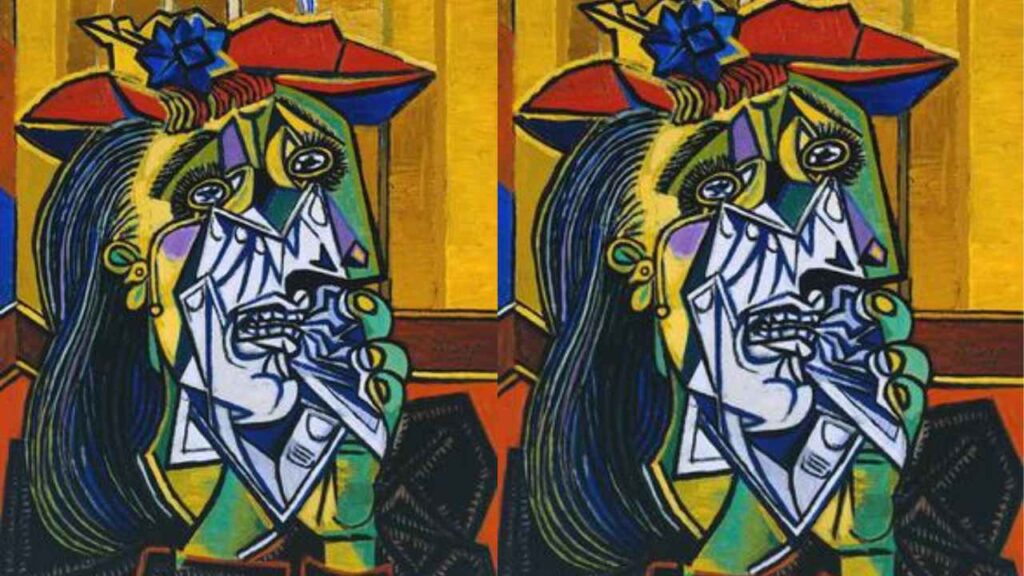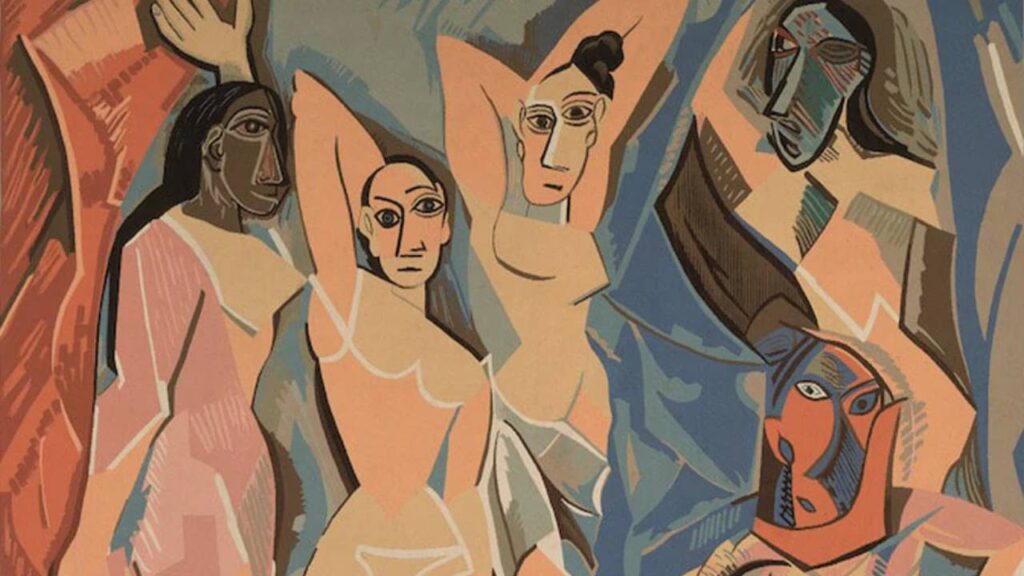Top 10 Picasso famous paintings: Spanish artist Pablo Picasso was a pivotal figure in the development of 20th-century art. Picasso’s innovative approach to form, color, and perspective transformed artistic expression and established him as one of the most influential artists of the era.
Top 10 Picasso Famous Paintings 2025
1. Weeping Woman (1937)

A poignant work created by Picasso in 1937, Weeping Woman mirrors the suffering depicted in his larger work, Guernica, which depicts the brutal impact of the Spanish Civil War.
This particular painting depicts the despair of a woman mourning for her dead child, a motif taken from the fresco mentioned above.
Responding to the bombing of Guernica by Nazi forces, the artwork uses the figure of Dora Maar – both an artist and Picasso’s partner – who documented.
2. Demoiselle’s d ‘Avignon (1907)

A historical painting by Picasso, Les Demoiselles d ‘Avignon, dramatically departed from traditional methods of composition and perspective.
Depicting five nude figures influenced by Iberian sculpture and African masks, the painting challenges traditional spatial constructions, using fragmented planes to create a dynamic, destabilizing effect.
Displayed in Picasso’s Paris studio, this masterpiece represents a monumental shift in modern art, pointing to the emerging Cubist movement.
3. Guernica (1937)
Guernica, painted by Picasso in 1937, is a monumental work that stands as a powerful statement against war. Displayed at the Museo Reina Sofía in Madrid, this painting uses a stark monochrome palette to depict the horror of the bombing of Guernica during the Spanish Civil War.
4. La Vie (1903)
At just 21, Picasso, grappling with the suicide of a friend, plunged into the gloomy tones that define his Blue Period. La Vie, painted in 1903, stands as the pinnacle of this phase, showcasing themes of despair, isolation, and social alienation through a limited, cool palette.
5. The Old Guitarist (1903-04)
Picasso’s work The Old Guitarist, an important piece from his Blue Period, shows his sympathy for the poor, influenced by his own financial struggles. The work features an elongated, sad figure, reflecting Picasso’s fascination with the human condition It also reflects El Greco’s stylistic variations, situating the painting within a broader Spanish artistic heritage.
6. Figures at the Seaside (1931)
Influenced by his relationship with Dora Maar, this painting depicts figures with exaggerated, gluttonous mouths and intertwined bodies, symbolizing intense longing and unity with nature. His sculptural forms blend seamlessly with the coastal landscape, highlighted by golden sunlight and a whimsical touch of domesticity through the beach hut in the background, depicting a complex portrayal of human passion and its integration with the natural world.
7. Le Reve (1932)
Le Rêve (The Dream) is a striking portrait of Picasso’s girlfriend Marie-Thérèse Walter, painted in 1932. In this painting, Picasso replaces the classical subject of the seated figure with vibrant colors and sensuous curves, reflecting his eccentric approach to painting.
8. Jacqueline with Flowers (1954)
Picasso’s painting Jacqueline with Flowers is a vibrant tribute to his second wife Jacqueline Roué. This work, part of a larger series, skillfully blends the tenderness of expressive imagery with the dynamic abstraction of Cubism. The painting features a geometric deconstruction of Jacqueline’s figure, along with a bouquet of delicate roses, using thick lines and rich, contrasting colors to create a sense of vibrancy and movement.
9. At The Lapin Agile (1905)
The Lapin Agile, a seminal work created by Picasso in 1905, shows him as Harlequin alongside his lover Germaine Pichot, the inspiration and tragic character associated with the suicide of his friend Casagemas. Commissioned by Frederic Gerard for the Montmartre cabaret Le Lapin Agile, depicting him playing the guitar, this painting embodies the bohemian spirit of Paris during the era
10. Girl with a Mandolin (1910)
In Girl with a Mandolin, Picasso delved deeper into Analytical Cubism, decomposing and recombining the subject into geometric forms, painting multiple perspectives within a muted, almost monochromatic palette. This method departs from traditional Western art’s focus on central focal points and realistic color, favoring an abstract, unified surface that challenges conventional representation.
Also Read:




